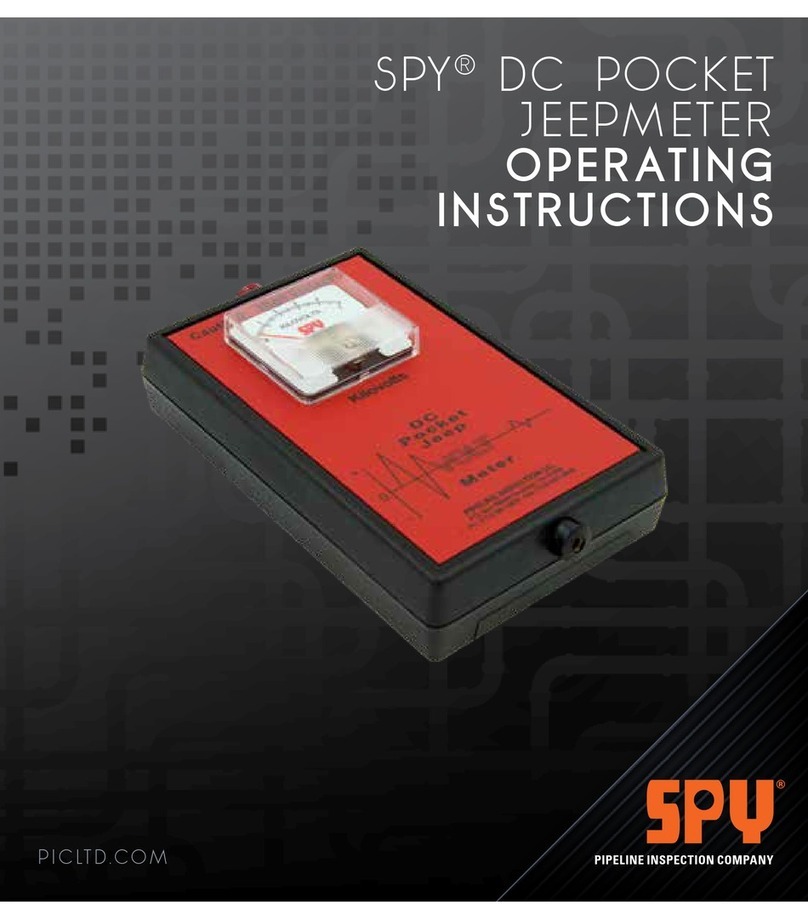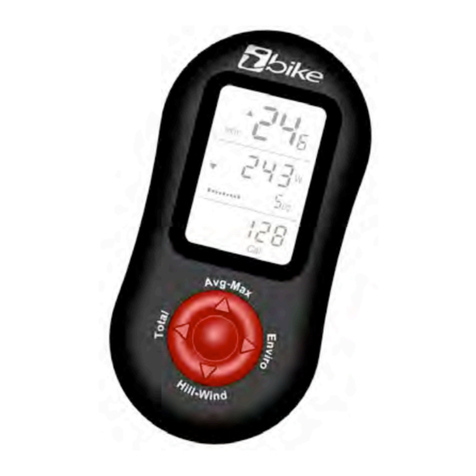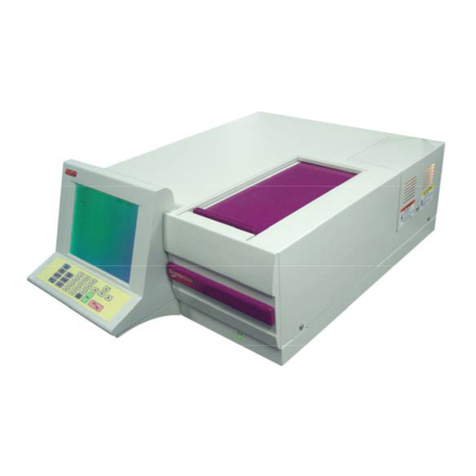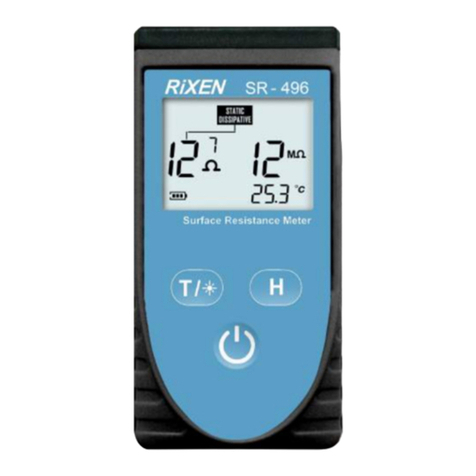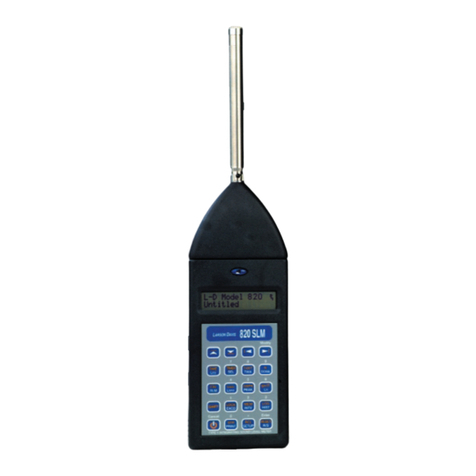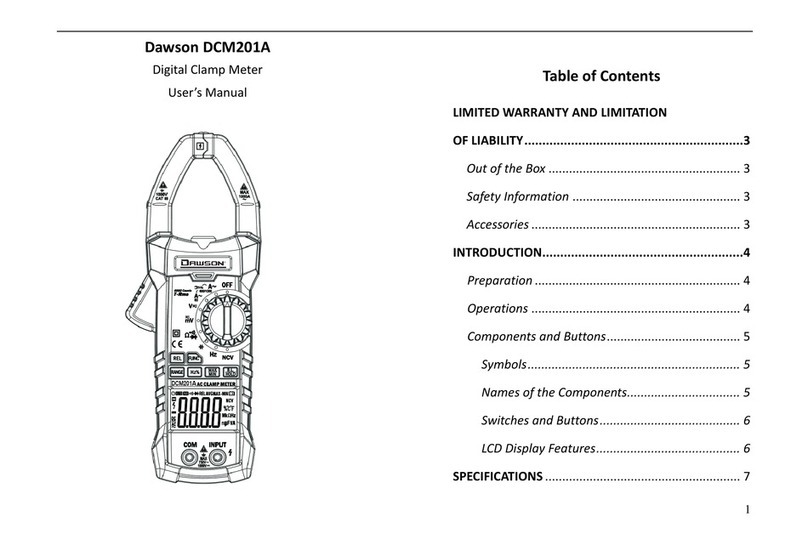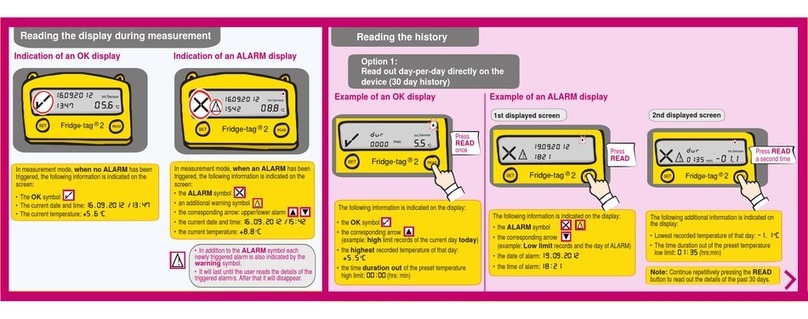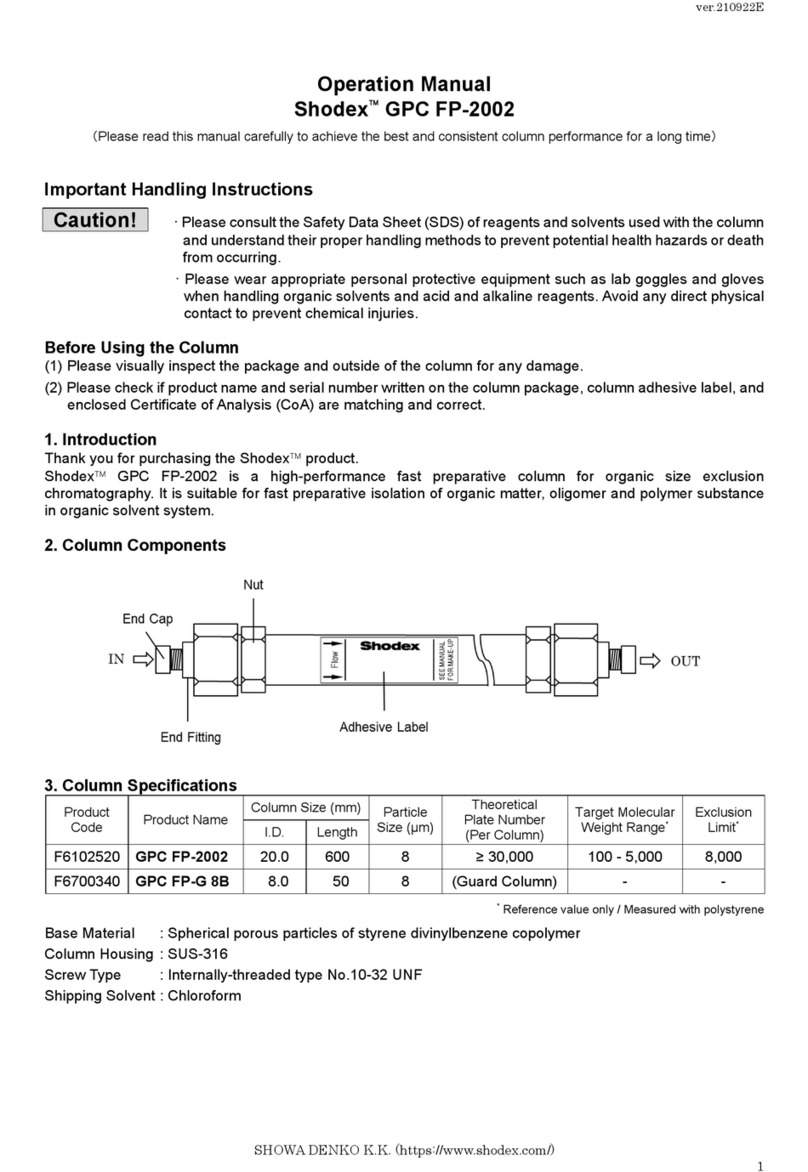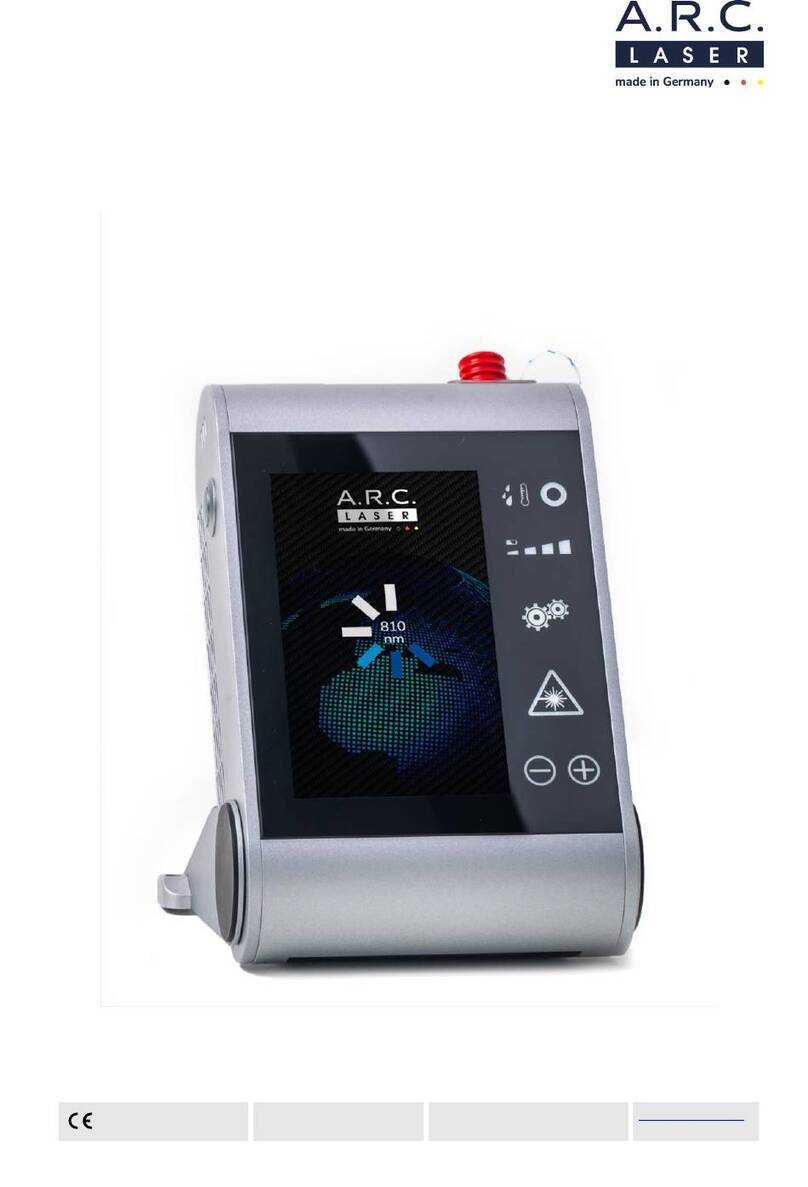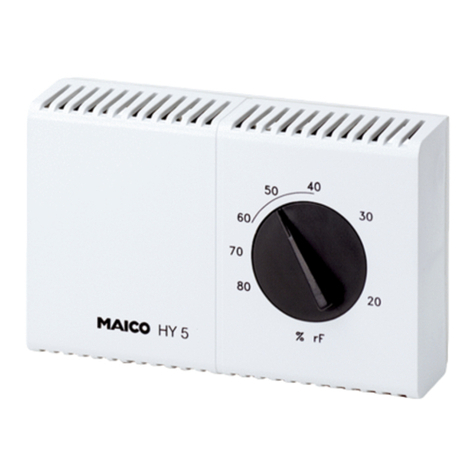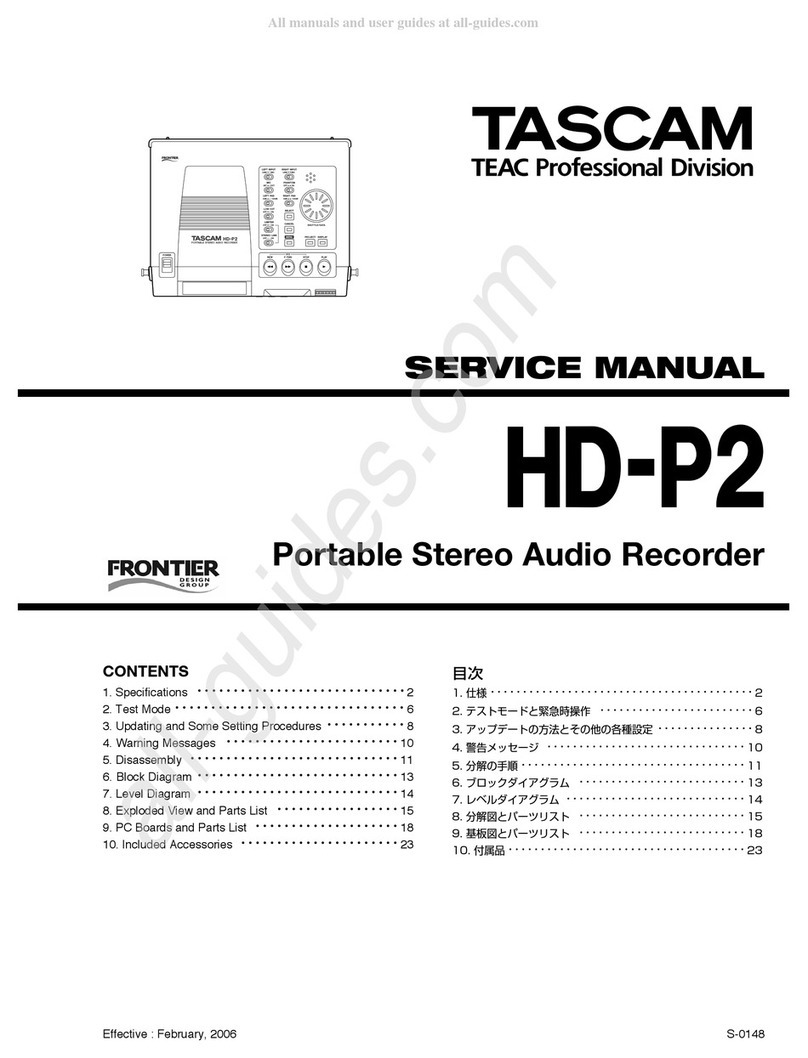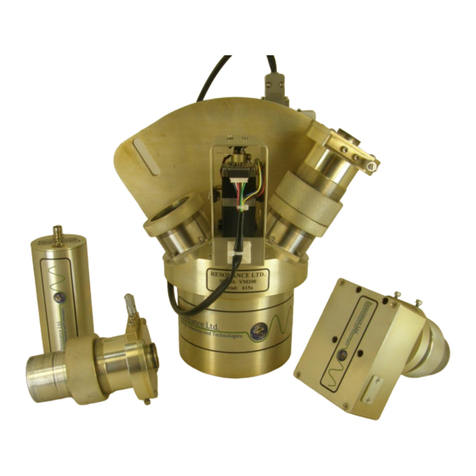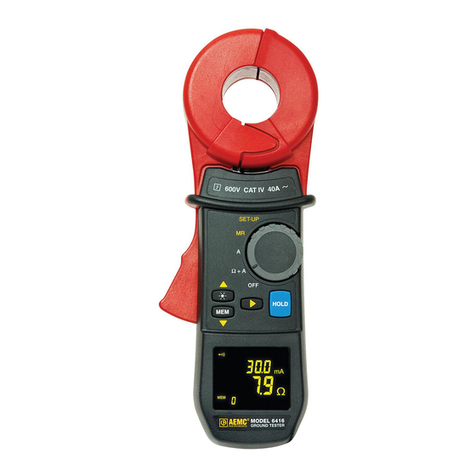SPY PIG TRACKING SYSTEMS User manual

o p e r at i n g
instructions
Spy®
pig tracking
systems
models pt101, PT107, PT275,
PT750, PTR & PTS

2
The SPY®Pig Tracking System meets the Electromagnetic Compatibility
and Low Voltage Directive. This product is a Class B, Group 1 ISM
equipment according to CISPR 11. Group 1 ISM product: A product in
which there is intentionally generated and/or used conductively coupled
radio-frequency energy which is necessary for the internal functioning
of the equipment itself. Class B products are suitable for use in
domestic establishments and in establishments directly connected to
a low voltage power supply network which supplies buildings used for
domestic purpose.
is a registered trademark of SPY Inspection Equipment,
Houston, Texas, United States.
A copy of this Operating Instructions Manual can be downloaded on our
website at spyinspect.com.
welcome
Thank you for purchasing a SPY®Pig Tracking System.
SPY®Inspection Equipment and our SPY®brand of Coating Inspection,
JeepMeter and Pig Tracking Equipment has been serving companies all
over the world for over 65 years. With the purchase of this high precision
instrument you can now enjoy access to worldwide service and support
only SPY®and our vast Distributor network can offer.
For more information about SPY®brand equipment please visit our
website at spyinspect.com.

3
Table
of
contents
Pig Tracking Systems Overview . . . . . . . . . . . . . . . . . . . . . . 4
Electromagnetic Transmitters General Information . . . . . . . . . . 6
Technical Specifications (PT101, PT107) . . . . . . . . . . . . . . . . . 8
Technical Specifications (PT275, PT750) . . . . . . . . . . . . . . . . 9
Replacing the Batteries . . . . . . . . . . . . . . . . . . . . . . . . . . . 10
Pig Tracker Receiver (PTR) . . . . . . . . . . . . . . . . . . . . . . . . 12
PTR Specifications . . . . . . . . . . . . . . . . . . . . . . . . . . . . . 13
Setup and Free Air Test for the PTR . . . . . . . . . . . . . . . . . 14
Before Launching the Transmitter . . . . . . . . . . . . . . . . . . . . 15
Launching and Tracking . . . . . . . . . . . . . . . . . . . . . . . . . 15
Pinpointing a Stuck Pig . . . . . . . . . . . . . . . . . . . . . . . . . . 16
Pig Tracker Sensor (PTS) . . . . . . . . . . . . . . . . . . . . . . . . 18
PTS Specifications . . . . . . . . . . . . . . . . . . . . . . . . . . . . . 19
PTS Individual Modules . . . . . . . . . . . . . . . . . . . . . . . . . . 20
Mounting Hardware for PT275 . . . . . . . . . . . . . . . . . . . . 22
Mounting Hardware for PT750 . . . . . . . . . . . . . . . . . . . . 23
Maintenance & Repair . . . . . . . . . . . . . . . . . . . . . . . . . . . . 24
Warranty . . . . . . . . . . . . . . . . . . . . . . . . . . . . . . . . . . . . . . 25
Accessories . . . . . . . . . . . . . . . . . . . . . . . . . . . . . . . . 26
Related Equipment . . . . . . . . . . . . . . . . . . . . . . . . . . . 27

4
pig
tracking
systems
overview
SPY®Inspection Equipment manufactures a complete line of portable
and “On-Pipe” pig tracking and locating systems. Pig Tracking refers
to monitoring the passage of a pig as it moves past prescribed and
monitored points along the pipeline. Pig Locating refers to pinpointing
a pig that has become stuck or lost in a given pipeline or pipe manifold
system on land or at sea.
Unfortunately, carbon steel pipe acts as an ideal electromagnetic shield,
which limits the possible methods of transmitting a signal through the
pipe wall to a sensor. The common methods used to sense the passage
of a pig or attempt to locate it are: mechanical; radioactive; acoustic;
magnetic; and electromagnetic.
Mechanical systems have several drawbacks. They are invasive into the
line, which makes them a potential environmental and safety hazard. They
are subject to contamination by materials in the pipe, which can prevent
them from operating correctly. They are also subject to mechanical wear
and damage, which will prevent them from operating properly.
Radioactive systems have two main drawbacks. One of which, the
radioactive nature of the transmitting device itself makes people
extremely skittish in regards to using it. The second is that the transmit-
ting distance is very limited which makes it primarily usable only when
the “outside-the-pipe” sensor is directly attached to the pipe.

5
Acoustic systems generate an audible signal, which can be picked up
by external sensors, but only when there is sufficient acoustic coupling
between the transmitter and the wall of the pipe. This usually limits their
use to lines filled with liquid, and as you might expect lines which do not
operate in a high noise environment such as sub-sea lines.
Magnet equipped pigs operate well for tracking. They are not of any use
in locating a stuck pig as it is practically impossible to locate them when
they are not in motion. This is simply due to the physics of the type of
signal generated.
SPY®portable systems utilize an electromagnetic transmitter, which is
attached to, embedded in, or travels with the pipeline pig, and a receiver/
wand that will pick up the signal from those transmitters at a distance
allowing for significant ground cover. This signal is a low frequency signal
that operates in the magnetic range of the electro-magnetic spectrum,
which allows the signal to penetrate the steel pipe wall to transmit a
given distance through the ground.
SPY®Inspection Equipment offers two “On-Pipe” systems. One is
designed to work with our electromagnetic transmitters. The other
system is designed to work with magnet equipped pigs with magnets
of sufficient strength to create a field strength of at least one (1) Gauss
outside of the pipe.

6
Electromagnetic
Transmitters
general
information
SPY®Inspection Equipment transmitters pulse at approximately one
pulse every second, which helps to identify this signal over spurious
random noise that the receiver may pick up. This pulse can easily be
detected by using our pig tracker receiver (PTR) and by many other
electromagnetic receivers on the market.
The PT-101 and PT-107 are designed to be mounted in a Poly foam
cavity pig. The PT-275 and PT-750 can be placed in a cavity pig,
mounted to a mandrel pig, or towed behind another pig for ease of use.
These transmitters are “O” ring sealed (water tight) and capable of
working in high-pressure environments (see page 7). Their main bodies
are constructed of rugged carbon steel. Care should be exercised
when exposing them to harsh chemicals. Check with the factory for
chemical compatibility.
Our electromagnetic transmitters utilize off the shelf batteries for easy
inexpensive replacement capability. While these batteries provide
ample life for the transmitters in service, it is prudent practice to use
fresh batteries prior to each new use. Please note that you should
check the expiration date on the batteries that you purchase as older
batteries with reduced life might be sold at retail outlets.

7
NOTE! GROUND COVER OR WATER DOES NOT SIGNIFICANTLY
IMPACT THE SIGNAL PRODUCED BY OUR TRANSMITTERS. THE
WALL THICKNESS OF THE CARBON STEEL PIPE IS THE MOST
IMPORTANT FACTOR TO BE CONSIDERED. IT IS ALSO IMPORTANT
WHEN USING THE TRANSMITTER WITH A STEEL MANDREL PIG TO
ENSURE THAT AT LEAST 1⁄2 OF THE TRANSMITTER IS OUTSIDE OF
THE STEEL MANDREL.
Other than replacing the batteries or “O”rings, each transmitter is
essentially maintenance free. Please note that if the transmitters are
damaged by abrupt stops or by valve gates etc., they may require repair
at the factory prior to re-use. Please inspect them after each use for
obvious damage. This could result in significantly lower repair charges.

8
technical
specifications
MODEL PT101 PT107
Minimum Pipe Size 2” – 4” 2” – 8”
[50.8mm – 101.6mm] [50.8mm – 203.2mm]
Transmitter Length 4.1875” [106.4mm] 6.3125” [160.33mm]
Transmitter Diameter 1” [25.4mm] 1.25” [31.75mm]
Maximum Hours 60 Hours 60 Hours
of Signal
Batteries Required 1 Lithium 3V 1 Lithium 3V
Maximum Pickup 15’ – 20’ 20’ – 25’
Range (free air) [4.72M – 6.096M] [6.1M – 7.62M]
Ground Cover Depth 4’ [1.23M – 1.83M] 6’ – 8’ [1.83M – 2.44M]
Pickup Range
Maximum Operation 1000 PSI [69 Bar] 1000 PSI [69 Bar]
Pressure
Temperature Range -20oF – 180oF -20oF – 180oF
[-29oC – 82oC] [-29oC – 82oC]
*Minimum Pipe Bend 2” – 5D* 2” – 5D*
(Medium – High 3” – 4” 3D* 3” – 8” 3D*
Density Polly Pig)

9
technical
specifications
MODEL PT275 PT750
Minimum Pipe Size 6” [152.4mm] and Up 12” [304.8mm] and Up
Transmitter Length 7.5” [190.5mm] 13.875” [352.4mm]
Transmitter Diameter 3” [76.2mm] 3.5625” [90.5mm]
Maximum Hours 200 Hours 500 Hours
of Signal
Batteries Required 4 “AA” Batteries 8 “C” Alkaline
Maximum Pickup 60’ – 75’ 100’
Range (free air) [18.29M – 22.86M] [30.5M]
Ground Cover Depth 15’ [4.6M] 25’ – 30’ [7.6M – 9.1M]
Pickup Range
Maximum Operation 2000 PSI [138 Bar] 3000 PSI [207 Bar]
Pressure
Temperature Range -20oF – 180oF -20oF – 180oF
[-29oC – 82oC] [-29oC – 82oC]
*Minimum Pipe Bend 3D* 3D*
(Medium – High
Density Polly Pig)

10
IMPORTANT:New batteries should be installed before every use to
ensure a strong signal. Once new batteries have been installed and the
end cap attached, the transmitter is “ON” and transmitting.
replacing
the
batteries
PT101 (1) 3V LITHIUM. Unscrew and remove the end
cap by turning the center of the transmitter counter-
clockwise. Insert the 3V lithium battery with the negative
terminal toward the spring inside the transmitter body
and the positive button toward the removable end cap.
Put both halves of the transmitter back together and tighten securely.
PT107 (1) 3V LITHIUM. Unscrew and remove the end
cap by turning the cap counter-clockwise. Insert the
3V lithium battery with the negative terminal toward
the spring inside the transmitter body and the positive
button toward the removable end cap. If in doubt,
observe the red decal on the outside of the transmitter body for proper
orientation. Replace the end cap and tighten securely.
PT275 (4) 1.5V AA ALKALINE. Locate the removable
end cap. It does not have multiple screw penetrations.
Unscrew the removable end cap by turning it counter-
clockwise. Do not attempt to remove the other end cap,
as it will result in damage to the transmitter. Before
installing the batteries, look into each of the battery tubes to ensure the
spring contacts are clean and free of foreign material. Also inspect the “O”
ring primary and secondary seals to ensure that they are in place, clean and
without cuts or abrasions. If in doubt replace the “O” rings to ensure against
media penetration that could result in significant repairs being required for

11
PT750 (8) 1.5V C ALKALINE CELL. Locate the removable
end cap of the PT-750. It does not have multiple screw
penetrations. Unscrew the removable end cap by turning
it counter-clockwise. Do not attempt to remove the other
end cap, as it will result in damage to the transmitter.
When the end cap is removed, you will see the black
battery holder assembly. Remove this. It will come out easily. You will see
four (4) individual battery holders on each side. Make sure prior to inserting the
batteries that all contacts are clean. Place the negative ends of the batteries into
each holder towards the spring. Press down and push back on the positive end
until it snaps into place. If the batteries are not properly installed, a protection
circuit will prevent the transmitter from operating. This is also a good time to
inspect the “O” ring seal to ensure that it is in place, clean and without cuts or
abrasions. If in doubt replace the “O” ring to ensure against media penetration
that could result in significant repairs being required for the transmitter. If the
“O” ring needs to be replaced or is overly snug, a thin coat of petroleum jelly will
help. Replace the battery holder assembly by placing the end with the springs
back into the transmitter body first and with the spine holding the individual
battery holders together opposite the other internal assembly in the transmitter
tube. Replace the removable cap and secure it snugly with a wrench.
CAUTION! NEVER REMOVE THE WHITE PIECE INSIDE THE
TRANSMITTER AS IT WILL RESULT IN SIGNIFICANT DAMAGE.
NOTE: IT IS IMPORTANT TO USE NEW BATTERIES WITH EACH JOB.
the transmitter. If the “O” ring needs to be replaced or is overly snug, a thin
coat of petroleum jelly will help. Install the batteries with the positive and
negative ends facing towards the removable cap as indicated by the sticker
immediately viewable upon removing the cap. One side (2 batteries) is to be
loaded positive end out, and the other side, negative end out. Screw on the
end cap and tighten securely with a wrench. If the batteries are not properly
installed no damage will be done; however the transmitter will not operate.

12
pig
tracker
receiver
(ptr)
The Pig Tracker Receiver (PTR) consists of the electronics and wand
as a set. The PTR is a very sensitive analog receiver that is designed
to pick up the low-level electromagnetic pulses provided by the
transmitters. The system is designed to provide you visual and audible
indication of the transmitter signal.
Audible indication of the signal is provided by means of a beep that
pulses with each sensed signal from the transmitter. Visual indication
is provided by means of an analog sweep meter. The meter hand
pulses with each received pulse. It also sweeps in a wider arc as the
signal strength increases and lessens as the transmitter moves away
from the receiver.
Battery status indication is provided by means of a red indicator light
that will illuminate when the “OFF/ON” switch is in the “ON” position
if the batteries are in good condition. If it does not illuminate, replace
the batteries.
Adjustment is provided for “Gain” via a knob on the front panel. “Gain”
can be thought of as sensitivity adjustment.
The PTR also provides for a remote signal, which can be sent to a
separate device to allow for remote registering of transmitter pulses.
The sensitivity that is essential to pick up these low-level
electromagnetic signals, is also a weakness in that it subjects the unit
to potential false signal trips. The more gain you can set without false
triggering, the better.

13
ptr
specifications
MODEL PTR
Frequency 23 Hz Receive
Battery 2 x 9 Volt
Battery Life 50 Hours
Display Type LCD
Signal Indicator Type Audible / Visual
Unit Weight (lb) 1.5
Unit Dimensions (L x W x H) 7.5” x 5.25” x 2.5”
Factory Warranty 12 Month
Domestic & International Standards CE Compliant
On/Off
Bat Switch
Audible
Signal Horn
Battery Indicator Light
Visual LCD Signal Strength Display Shoulder Strap Clips
Gain Knob
Wand Plug Port Quick Change Battery
Compartment
Benchtop Rubber Feet

14
Setup
and
Free
Air
Test
for
the
ptr
STEP 1. If desired, attach the supplied strap to the two “D” rings on each side of
the receiver to allow the receiver to be hung over the shoulder for ease of carrying.
STEP 2. Plug the Wand into the lower right side female audio receptacle on the
front of the PTR. To later release the wand, press the tab with the word “PUSH”
down until the connector is released.
STEP 3. Place the wand parallel to the transmitter.
STEP 4. To test for proper operation of the transmitter and receiver, begin by
placing the transmitter on the ground approximately 10 – 15 ft (3.05 m – 4.6 m)
from the wand. With the receiver switched on, turn the wand until it parallels the
transmitter and be sure that it is horizontal. Increase the receiver gain until you
hear the transmitter signal beep while verifying that you see the visual indicator
moving with the pulses. Begin moving away from the transmitter laterally while
keeping the wand steady, horizontal and parallel to the transmitter. The analog
meter movement will begin to decrease with distance. Begin to increase the gain
slowly as you walk away, ensuring that you continue to receive signal from the
transmitter. Continue walking away as you turn the gain slowly up to maximum
(10). Continue walking away until you loose the signal. This point represents the
maximum free air transmit distance for this transmitter.
NOTE: As you turn the gain above 5, you will begin to notice more false
signaling created by movement of the wand. You should also note that due
to the nature of the type of signal the receiver senses, items such as, keys,
pocket knives, tools, large metal belt buckles, or other metallic items can cause
disturbances in the earth’s electromagnetic field, and create false signals.
Other possible sources of false signals are electronic wristwatches, electronic
vehicle ignition systems, and two way portable radios.

15
before
launching
the
transmitter
A short period of working with the units in the shop prior to using the equipment
in the field is highly recommended.
After the batteries have been installed in the transmitter and before the pig
has been launched, turn the transmitter on and verify that you can pick up the
transmitter. Move away approximately 5 to 10 ft (1.5 m to 3.04 m). Place the
wand parallel to the pipe and turn the gain to 5 or 6. Verify that you still receive
the pulse. Again, note that you should not set the “Gain” higher than necessary
in order to pick up the signal as that will make the possibility of false triggering
much more likely. Conversely, if the “Gain” is set too low, you may not be able
to detect passage of the pig. If you cannot receive the transmitter signal by
adjusting the gain, replace the batteries in the transmitter and receiver.
launching
and
tracking
Prior to actual launch, and after the above described testing, place the wand
parallel and directly above the pipe on the ground, some distance down from
the launcher. Set the receiver gain to approximately 5 to 6. This will provide a
positive indication that the pig has actually left the launcher when the launch
process begins.
Repeat this process at prescribed intervals along the pig run and monitor the
pig movement past these checkpoints to verify the pig’s progress.
By using two receivers you can “leapfrog” one over the other to track the
passage. This process is highly recommended. Minimize the distance between
the “leapfrog” positions in order to minimize the possible distance that will
have to be walked to locate a stuck pig.

16
pinpointing
a
stuck
pig
Pinpointing the location of the transmitter located in a stuck pig is a
relatively simple operation. Move to the last leapfrogging location where
you know the pig passed. At this point hold the wand horizontally and
begin to slowly walk the line listening for the steady pulsing beep of the
transmitter. Please note that you must be sure where the pipe is when you
are attempting to walk the line. Lateral distance from the center of the pipe
will greatly decrease the possibility of picking up the signal. Drawings do
not always represent the actual position of the pipe. Nor can you assume
you know that the pipe goes in a straight line between two points. Use
a pipe locator to ensure you know the pipe location. If you cannot use
a locator, begin walking the line using sweeping “S” curves over the
approximate location of the line. This should enhance your possibility of
actually passing over the line. If too many stray or false signals are picked
up caused by bouncing or movement of the wand or spurious signals turn
the gain down.
Upon picking up the signal, continue walking towards the transmitter while
watching the analog sweep meter. When the meter movement begins to
decrease, move backward until you see the approximate maximum signal
strength. Turn the wand vertical over the pipe. Slowly move the wand over
the approximate area of maximum signal strength. The signal strength will
increase and then fall to zero as well as the audible signal will disappear
(in other words “NULL”) and then start to rise again. Move the wand back
and forth until you center over the “NULL”. You should now be standing
directly over the transmitter.

17

18
pig
tracker
Sensor
(pts)
When the need for noting the passage of a pig becomes a little less
temporary, (e.g.; manpower or distance prevents leap frogging) then SPY®
offers a line of stationary Pig Tracking Sensors (PTS). We offer the standard
PTS for use with electromagnetic transmitters and our model PTS-M for
use with magnet equipped pigs.
The PTS system requires NO HOLE to be drilled in the pipe. This non-
invasive system allows for lower installation costs and significantly reduces
the overall cost of the monitoring point. It also offers safer monitoring. This
feature also makes the PTS more desirable than invasive systems from a
pollution prevention standpoint.
The PTS systems must be mounted directly onto the pipe in order to pick
up the signal of the transmitter or magnet. Care should be taken to allow
sufficient distance between the sensor and the launcher/ receiver so that
the pig can travel completely past the sensor.
NOTE: The PTS is a passage indicator, not a presence indicator.
Power Module*Sensor Module*Indicator Module*
Reset Button
Passage
Indicator
Window
*Explosion-proof Class I, Division 1, Groups B, C, & D certified enclosures.

19
Mounting can be permanent or temporary and can be accomplished by using
pipe straps or clamps. Units can be installed along the line as often as needed.
The systems are provided in explosion-proof Class I, Division 1, Groups B, C, &
D certified enclosures. The enclosures come complete with an “O” ring seal,
which makes the housing NEMA 4X/7. Three quarter inch hubs are provided on
each enclosure for conduit connection into your SCADA or recording system.
When supplied by the factory as an assembly, proper explosion proof fittings are
used and manufacturer specified procedures are followed to connect the units in
order to maintain their rating. Make sure that you follow proper wiring and conduit
procedures as specified by the appropriate authority for wiring in hazardous areas
if you wish to connect your monitoring systems to the PTS system.
pts
specifications
MODEL PTR
Enclosure Enclosure Class 1, Division 1,
Groups B, C & D Blind modules
Power Input Either 129 Volts AC or ±3VDC (Sensor
Module) and 18 Volts DC for Indicator**
Power Output Normal Open non-latching Dry
Contacts rated at 1A at 250 Volts AC
Transmit Speed PTS Passage Indicator NOT a
Presence Indicator
Display Type Visual
Unit Weight (lb) 9.4
Unit Dimensions (L x W x H) 26” x 26” x 4.75”
Factory Warranty 12 Month
Domestic & International CE Compliant
Standards
**Other types of power supply inputs can be used, but must be specified on order entry
to allow for modifications to be made to the modules.

20
pts
individual
modules
PTS SENSOR. The Sensor Unit can be powered
using 120 Volts AC input or by ±3VDC input from the
PTSB module. The sensor picks up the presence of
the Pig Tracker Transmitter signal and then activates
a set of normally open dry contacts with a maximum
rating of 1A @ 250 Volts DC. These contacts will
remain engaged as long as the signal is present. They will open within two
seconds of the absence of the signal.
PTS INDICATOR MODULE. The PTSI indicator is
powered by the PTSB module or by the 120 Volt AC
being supplied to an AC powered PTS module. The
indicator for noting pig passage is a 2 inch orange
disc. This disc is orange on one side and black on the
other. When the PTS notes a Pig Transmitter signal
by closing the contacts in the PTS, that actuates the
indicator to flip from Black to Orange. The indicator is visible by means of a
viewing window in the cover of the unit. This unit must be reset after each
passage of a pig by the means of an external magnetic button.
PTSB BATTERY POWER MODULE. The battery
module can supply ±3VDC Volts DC for powering
the Sensor and 18 volts DC for powering the PTSI
indicator module. This module can also be configured
to supply backup power for a 120-Volt AC powered
version of the PTS Sensor.
This manual suits for next models
6
Table of contents
Other SPY Measuring Instrument manuals
